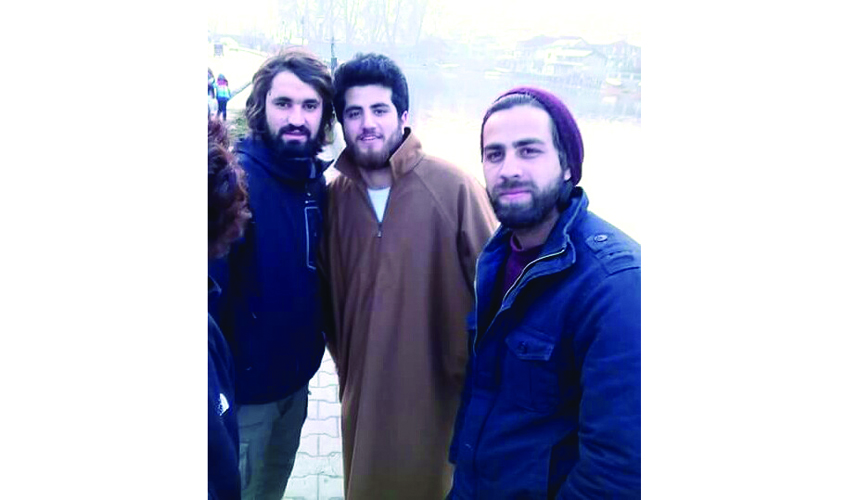At Kashmir University’s picturesque Naseem Bagh campus, a fallen chinar became the venue for young students to meet up and plan creative activities to overcome agony accrued from months of summer unrest.
Three scholars from KU’s Media Education and Research Centre—Ali Saifuddin with his guitar, Syed Shariyar with his still camera, and Mu’azzam Bhat with his collection of raps—used to sit beside the fallen chinar, discussing Kashmir. At a time when students were on the streets protesting, they thought of ways to express dissent through literature and music. More students joined them, their meetings frequented.
Mu’azzam, who has a gift for writing poetry, composed verses that outlined the dreams he had harboured as a child and fears that punctuated those dreams. “My personal tragedy moved other students who had had similar experiences,” Mu’azzam told The Sunday Guardian, as he briefed this correspondent about their activities as “creative rebels”.
Their determination grew stronger when they met live musicians in the university including Ali Saifuddin, their classmate. Instant fame followed with one of Mu’azzam’s raps, Nobody believed in me, nobody to trust me; it feels like every single cop is here out to bust me, going viral.
Shariyar used his skills as a photographer to capture the street battles between youngsters and the security forces—a grim image that has haunted hundreds of young men like him who grew up during the turbulent 1990s. Many of his photographs, including those of funeral processions, have been published by newspapers and magazines of international repute.
Saifuddin told this correspondent that over a meeting by the fallen chinar, they chanced to break ice with two young film directors, Fazil N.C. and Shawn Sebastain, who had come to make a film on the spiritual journey of Kashmir. But their (the KU students’ group) determination to use art as a medium to register dissent motivated the duo, who subsequently made a 16-minute film titled In The Shade of the Fallen Chinar.
The film depicted how the banning of students’ unions has left Kashmir’s students without any outlet to voice their grievances. The film’s success motivated the three students to work on similar future projects.
Saifuddin, who is currently working to revive old Kashmiri folk songs, said, “Enraged by violence, we sometimes thought we should pick up the gun. All of us were mentally disturbed. But we ultimately decided to communicate our feelings through various forms of art.” “I am keeping the soul of Kashmiri music intact and infusing only contemporary touches to make it suitable for the young generation,” he added. His songs, Ek Aur Dafah Meri Watan Ki Galiyon Se and Suraj ki tarah dooba hain toh ubrain ge bhi, which celebrate the resilience of Kashmiris, have become household anthems.
His friend Owais Ahmed, a musician and scriptwriter, is giving final touches to his documentary that captures the unrest of 2016. Saifuddin said that this documentary will focus on people who were forced to sit idle at home for four months because of the long curfews and violence. The film will highlight how difficult it was for the youth to maintain their sanity in such trying circumstances. “I remember going alone, with my guitar hidden in my bag, to this fallen chinar, and singing aloud my own compositions, after the dismissal of classes. Slowly, my loneliness was broken by other friends, and finally, it led to a kind of students’ movement where everyone expresses rage in creative ways,” Saifuddin summed up.

